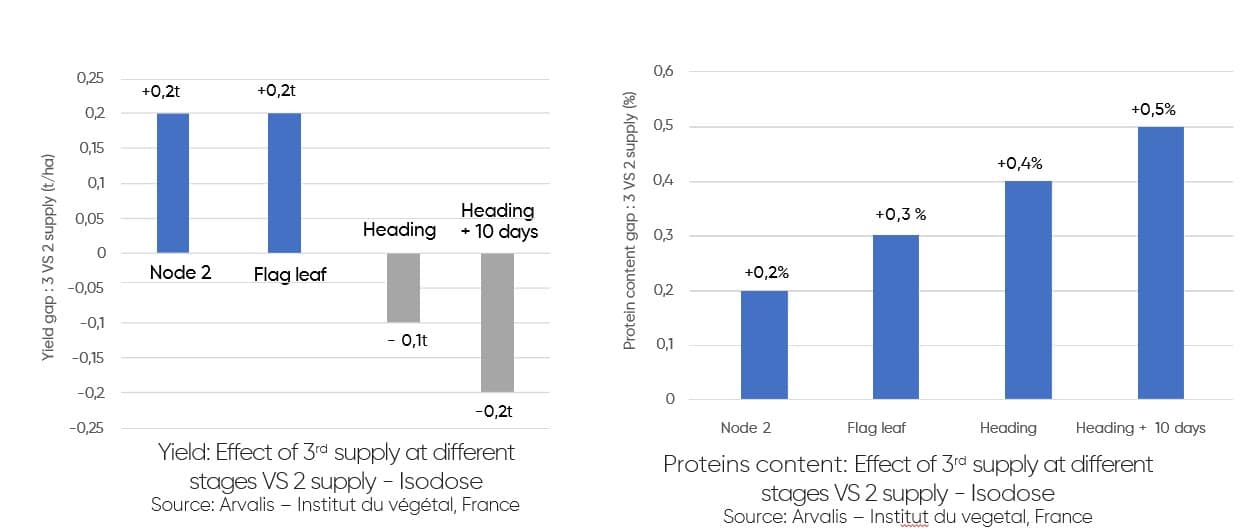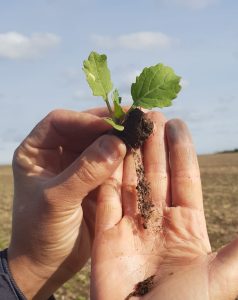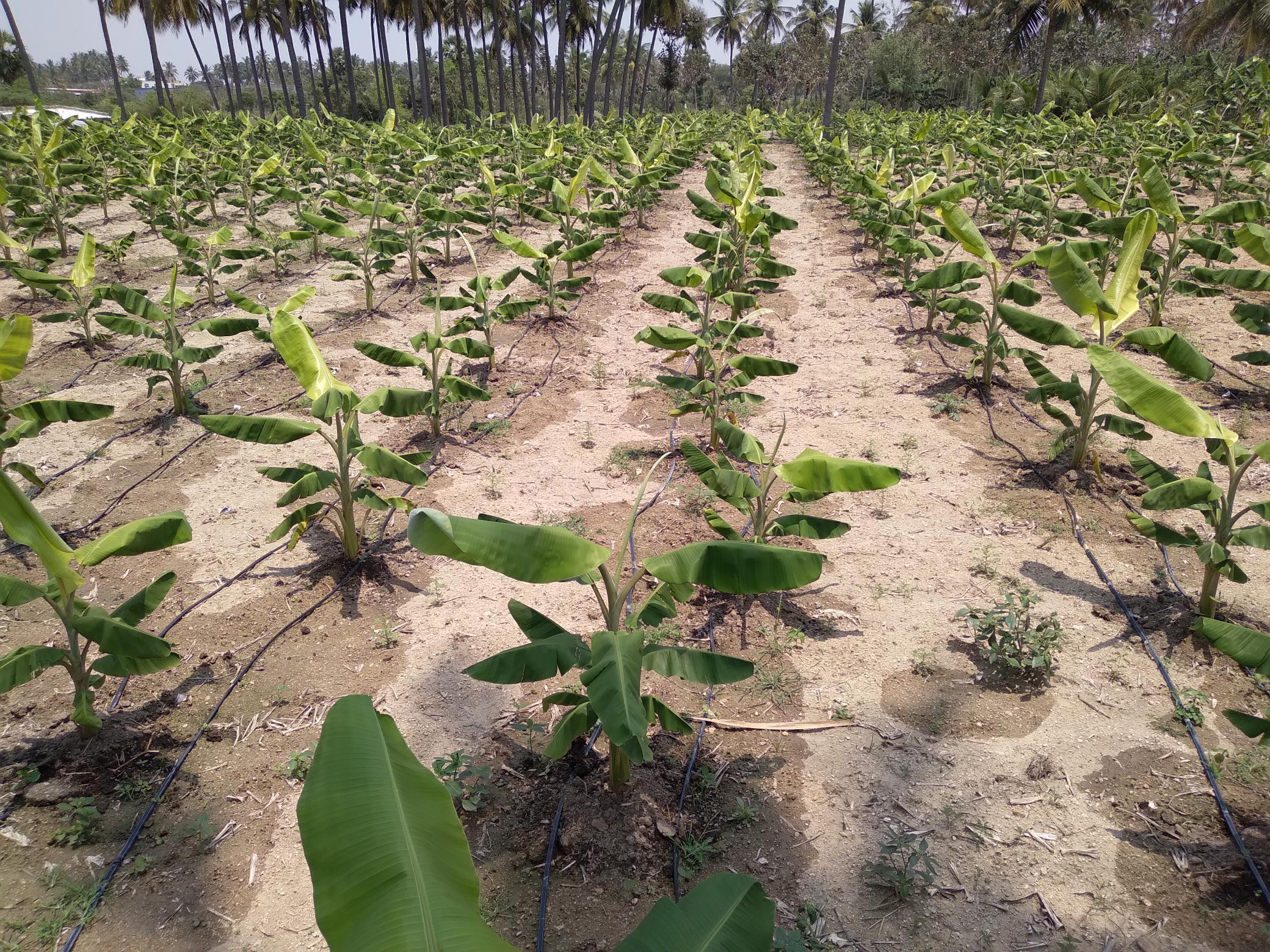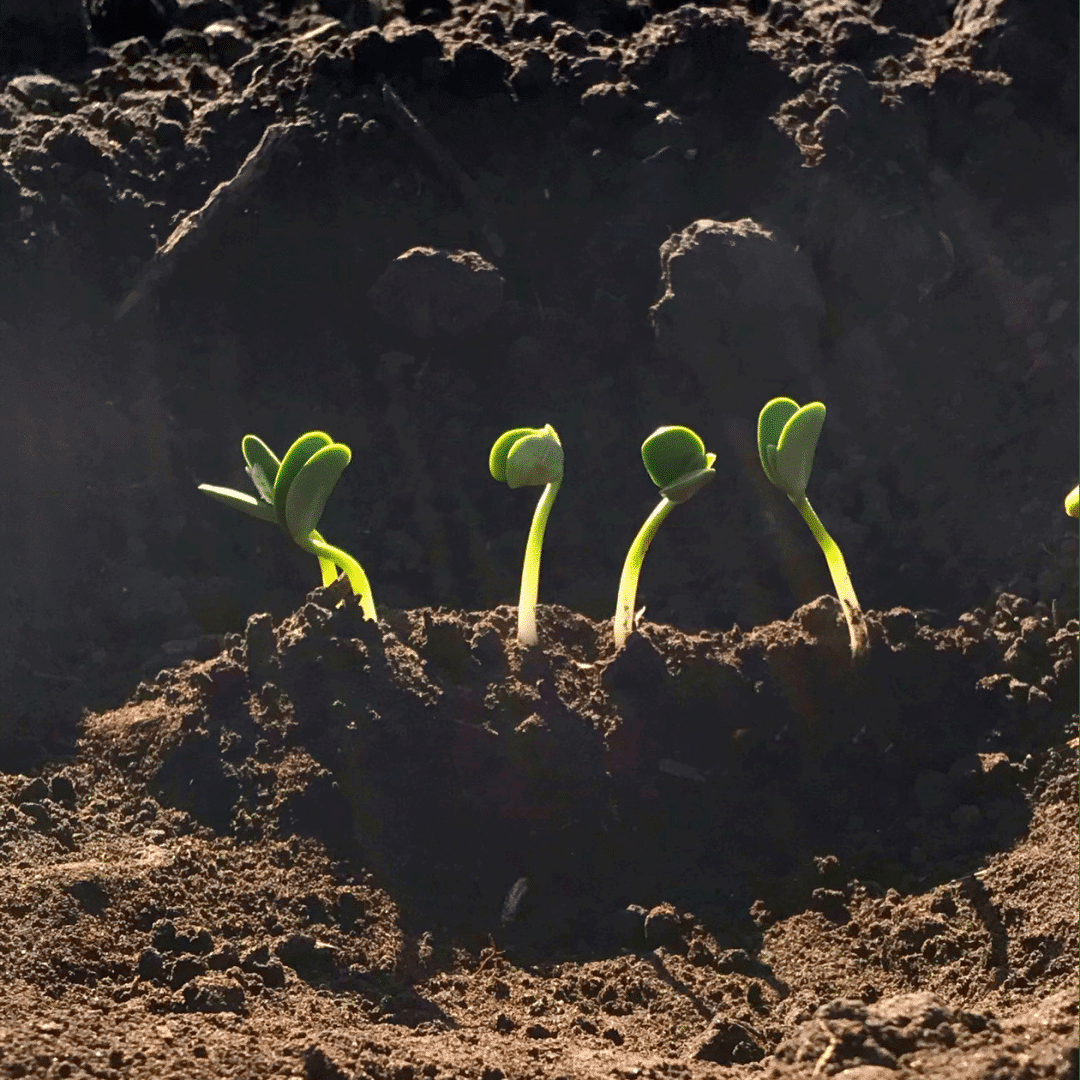Wheat is a demanding crop regarding its requirements in nitrogen.
The purpose of the last supply of nitrogen is to secure yield and ensure a sufficient protein content. 80% of nitrogen is already absorbed and will be remobilized for the plant’s growth. Each industry (milling, bread-making, etc.) has its own requirements in relation to these contents. Payment to farmers is indexed to proteins content.
80% of nitrogen is already absorbed by the plant at the flag leaf stage.
Why is the third supply important ?
At flag leaf stage (BBCH 39), 80% of nitrogen is already absorbed. However, physiological activity must keep going: from BBCH 39, photosynthates production will go to grain for starch and grain production. This influences the yield and the protein content.
The protein content of grains depends on:
- The remobilization of nitrogen from leaves to grains. Energy, and thus photosynthesis, is essential for this process.
- 20% of nitrogen will be absorbed during flowering and maturation.
The third supply of nitrogen must be done around the flag leaf (BBCH 39) but generally at this period, it rains less and less.
When using a root fertilizer :
To value nitrogen granules, it must rain around 20mm in the following 15 days. In case of a lack of rain, granules won’t dissolve and therefore won’t release the nitrogen required by the plant. Nitrogen can therefore be lost in in the environment (volatilization, lixiviation…).
These multiple sources of losses cause an economic losses for farmers.
When using a foliar fertilizer :
It can be an alternative when there are difficult conditions (drought…) as nitrogen is more absorbed by the plant. This means less losses in the environment, so less economic losses
However, leaf burns can be observed (ammonium salts) and may reduce photosynthesis activity and growth plant (if the leaf is burned up to 50%).
Contact your local TIMAC AGRO representative to learn which solutions to use to guarantee a good third supply of nitrogen.




